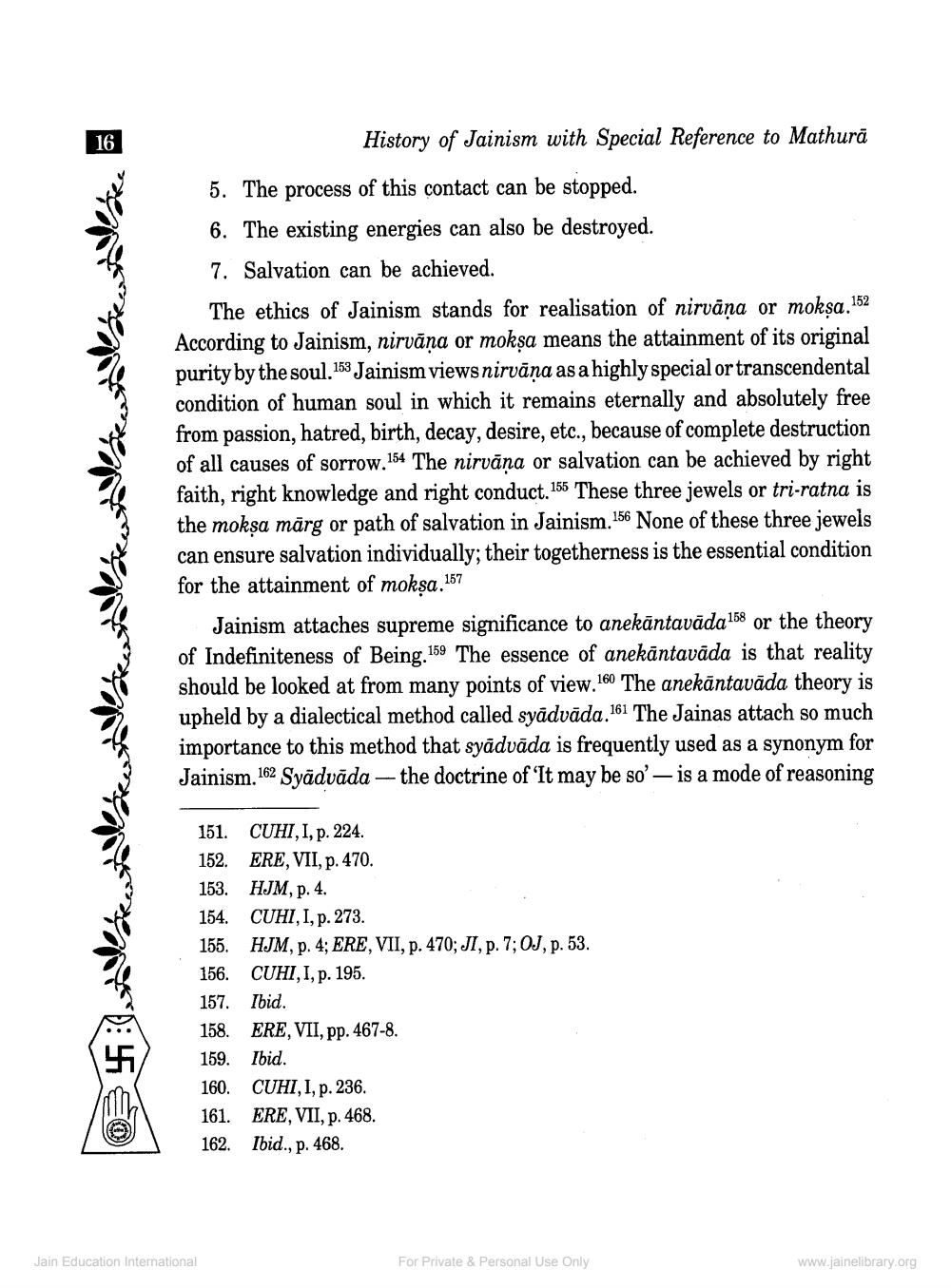________________
History of Jainism with Special Reference to Mathurā 5. The process of this contact can be stopped. 6. The existing energies can also be destroyed. 7. Salvation can be achieved.
The ethics of Jainism stands for realisation of nirvāņa or moksa .152 According to Jainism, nirvāṇa or mokṣa means the attainment of its original purity by the soul.153 Jainism views nirvāna as a highly special or transcendental condition of human soul in which it remains eternally and absolutely free from passion, hatred, birth, decay, desire, etc., because of complete destruction of all causes of sorrow.154 The nirvana or salvation can be achieved by right faith, right knowledge and right conduct.155 These three jewels or tri-ratna is the moksa märg or path of salvation in Jainism.156 None of these three jewels can ensure salvation individually; their togetherness is the essential condition for the attainment of mokşa. 157
Jainism attaches supreme significance to anekāntavāda 158 or the theory of Indefiniteness of Being. 159 The essence of anekāntavāda is that reality should be looked at from many points of view.160 The anekāntavāda theory is upheld by a dialectical method called syādvāda.161 The Jainas attach so much importance to this method that syādvāda is frequently used as a synonym for Jainism. 162 Syādvāda - the doctrine of 'It may be so' - is a mode of reasoning
151. CUHI, I, p. 224. 152. ERE, VII, p. 470. 153. HJM, p. 4. 154. CUHI, I, p. 273. 155. HJM, p. 4; ERE, VII, p. 470; JI, p. 7; OJ, p. 53. 156. CUHI, I, p. 195. 157. Ibid. 158. ERE, VII, pp. 467-8. 159. Ibid. 160. CUHI, I, p. 236. 161. ERE, VII, p. 468. 162. Ibid., p. 468.
Jain Education International
For Private & Personal Use Only
www.jainelibrary.org




